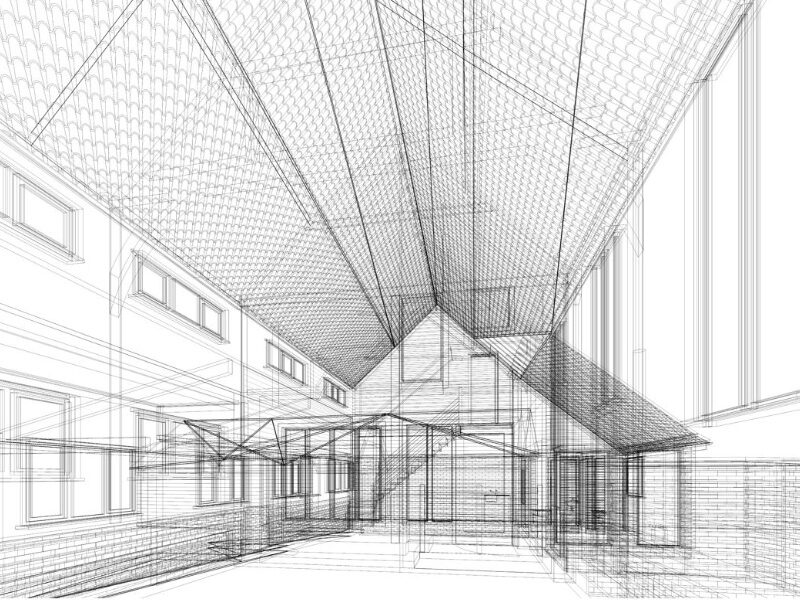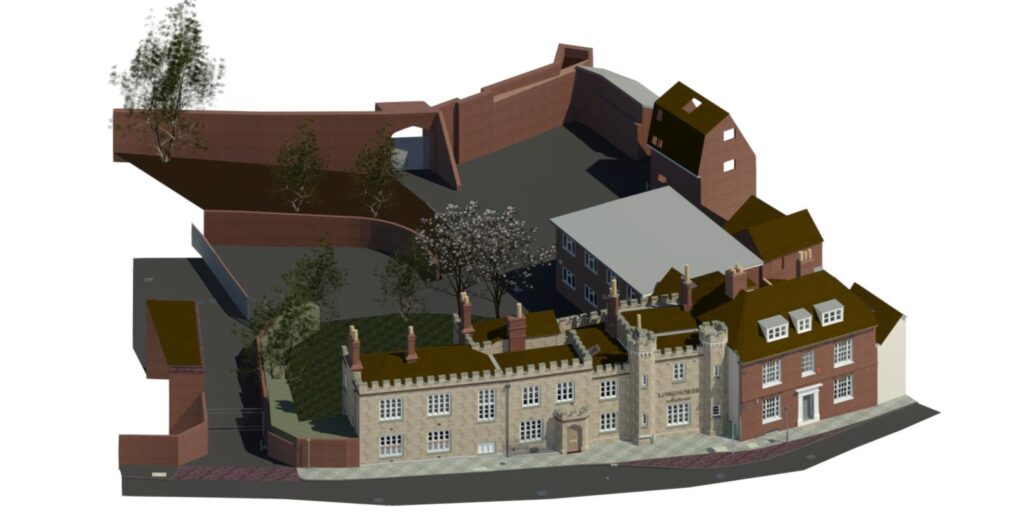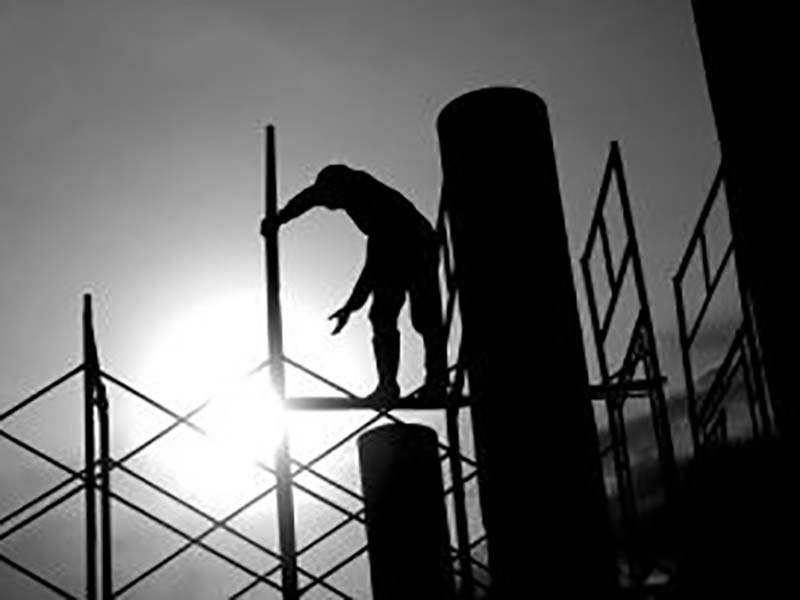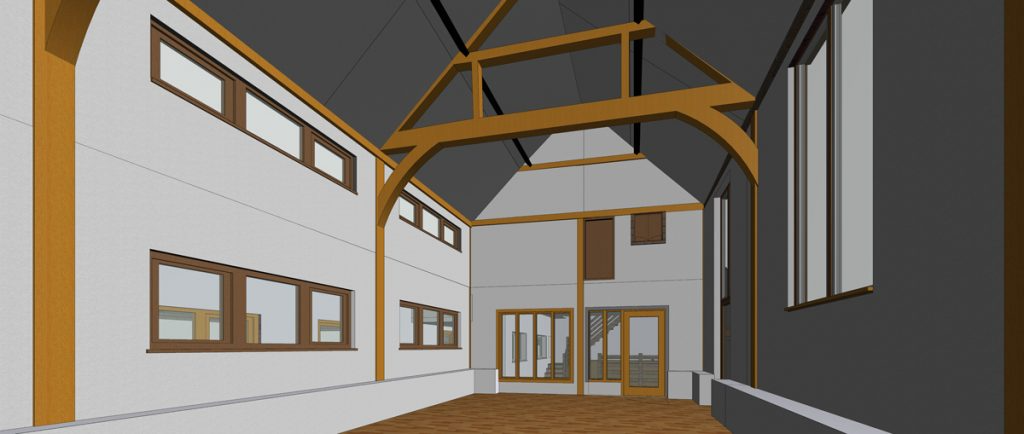You’ve designed a brilliant new building, secured planning permission, and you’re ready to break ground. But have you considered the shadows it might cast?
Or perhaps you’re on the other side of the fence. The house next door has been sold, and a planning notice has appeared for a new extension. Will your kitchen be plunged into darkness?
Here’s the thing: planning permission doesn’t tell the whole story.
There’s another legal consideration that catches many property owners and developers off guard: the Right to Light. It’s a private legal right that exists separately from the planning process, and ignoring it can lead to costly delays, redesigns, or even demolition orders.
In this article, we’ll break down what a Right to Light is, how it’s acquired, and why a professional survey is the essential first step in managing any potential issues.
What is a Right to Light? The Legal Facts
Let’s start with the basics.
A Right to Light is a type of legal easement. Now, if you’re not familiar with easements, think of them as rights that allow one landowner to use a neighbour’s land in a specific way without actually owning it.
In this case, it’s the right to enjoy natural light that flows over your neighbour’s land and through specific windows or apertures in your building.
It’s not about the view. It’s not about privacy.
It’s specifically about light.
How is a Right to Light Acquired?
There are three main ways a Right to Light comes into existence:
1. The 20-Year Rule (Prescription Act 1832)
This is by far the most common method. If a window has enjoyed uninterrupted light for 20 years, it automatically acquires a Right to Light. This is a long-standing principle, governed by the Prescription Act 1832.
No paperwork needed. No registration required. It just happens.
Think about that for a moment. Any window that’s been receiving light for two decades potentially has a protected legal right. That Victorian terrace you’re planning to develop next to?
Those windows have likely been there since Queen Victoria herself was on the throne.
2. Express Grant
Sometimes a Right to Light is explicitly written into the property deeds. This typically happens when properties are divided or when developers want to provide certainty for future owners. It’s black and white – the right exists because it’s been formally documented.
3. Implied Grant
This occurs when it’s implied in a property transaction. For example, when someone sells part of their land with a building already on it, the windows in that building are assumed to have rights to the light they’ve been receiving.
A Critical Note for Developers
Here’s something that might save you thousands: you can interrupt that 20-year prescription period. How?
You can erect a temporary obstruction for at least one year, or serve a Light Obstruction Notice through the local authority. This is a formal legal process that essentially resets the clock on the 20-year rule. It’s a proactive step that smart developers take when they acquire land for future development.
But timing is everything. Once that 20-year mark passes, the right is established, and you’ll need to work around it.
How is a “Right to Light” Infringement Measured?
Now we get to the technical bit – and this is where things get genuinely interesting.
A Right to Light isn’t about preserving all the light coming through a window.
It’s about maintaining sufficient light for the “ordinary and comfortable use and enjoyment” of a building, a standard upheld by professional bodies like the Royal Institution of Chartered Surveyors (RICS).
But how do you measure “sufficient”?
The Waldram Method: The Industry Standard
The construction and legal industries use something called the Waldram Method, often referred to as the 50/50 Rule. Here’s how it works:
A room is considered to have adequate light if 50% or more of its area can still receive at least 0.2% of the total available light from the sky.
That 0.2% figure is known as the “sky factor” – equivalent to one foot-candle or one lumen. It might not sound like much, but it’s the benchmark that’s been used in British courts for decades.
The Grumble Line
There’s a wonderfully British term used in Rights of Light assessments: the “Grumble Line”.
This is the line drawn on a room’s working plane (typically 850mm from the floor – about desk height) that separates the area with adequate light from the area without. If your development pushes that line too far into the room, you’ve got a problem.
Where We Come In
To perform these complex calculations, you need a highly detailed and accurate 3D model of both the affected property and the proposed development.
This is where we at Terrain Surveys play a crucial role.
Our team will survey your site to capture the exact dimensions, levels, window positions, floor levels, and surrounding context needed for this analysis.
We use the latest laser scanning technology to create comprehensive and accurate data that forms the foundation of any Rights of Light assessment.
Without this data, you’re essentially guessing. And in the world of property development, guessing can be extraordinarily expensive.
Risks for Developers & Architects vs. Rights for Homeowners
Let’s be frank about what’s at stake here.
Whether you’re developing or defending, understanding the risks and rights involved can mean the difference between a successful project and a financial disaster.
For Developers and Architects: The Stakes Couldn’t Be Higher
Proceeding without a Rights of Light assessment is like playing Russian roulette with your project budget.
We’ve seen it happen. A developer completes a beautiful new building, only to receive a court summons three months later. The neighbouring office block has lost light to their trading floor.
The solicitors start circling.
The Consequences of Infringement
When you infringe on someone’s Right to Light, two things can happen – and neither is pleasant:
1. Injunction
This is the nuclear option. A court order to stop construction or, worse, demolish the offending part of your development.
Yes, you read that correctly: Demolish.
We’re talking about tearing down floors that are already built, filled with flats that might already be sold. It’s rare, but it happens. And when it does, it’s catastrophic for everyone involved.
2. Damages
The alternative is financial compensation to the affected neighbour. This can run into tens or even hundreds of thousands of pounds per affected property.
And here’s the kicker: you might have multiple neighbours with valid claims.
One development in Central London recently settled Rights of Light claims for over £2 million.
That’s £2 million that wasn’t in the original budget. £2 million that came straight off the bottom line.
The Solution
The key is to assess the risk early in the design phase.
The data from our surveys allows architects & planners to carry out rights of light assessments and where required, tweak designs – adjusting massing, height, or position – to minimise impact before it becomes a legal battle. Sometimes moving a building just one metre back from the boundary can save hundreds of thousands in compensation claims.
It’s not about abandoning your vision. It’s about refining it with full knowledge of the constraints.
For Homeowners and Facilities Managers: Protecting Your Asset
Your property’s value is directly linked to its natural light.
That bright, airy kitchen that sold you on the house? The naturally lit office spaces that keep your staff productive and happy?
They’re not just nice-to-haves. They’re valuable assets that deserve protection.
What to Do When Development Looms
If you receive a planning notice or see scaffolding going up next door, don’t panic. But don’t ignore it either.
The first step is to establish whether you have a claim. Not every loss of light constitutes an infringement. Remember, it’s about that 50/50 rule we discussed earlier.
Empowerment Through Data
A formal report, based on accurate survey data, gives you the evidence needed to open a conversation with the developer, or with your solicitor.
Most developers would rather negotiate than fight. They want certainty, just like you do. If you
can demonstrate a legitimate claim early in their process, you’re far more likely to reach an amicable solution – whether that’s design modifications or fair compensation.
But without data, you’re just another concerned neighbour. With it, you’re a stakeholder who needs to be taken seriously.
The Solution: A Rights of Light Survey Process
Right, let’s get practical.
You understand the law. You know the risks. Now, what actually happens when you commission a Rights of Light assessment?
Step 1: Data
Our surveyors begin by capturing the essential data needed for a Rights of Light Assessment. This includes a meticulous Measured Building Survey of the affected building(s) and a Topographical Survey of the development site.

We’re not talking about someone with a tape measure and clipboard. We use state-of-the-art laser scanning equipment that captures millions of data points, producing a point cloud accurate to within millimetres.
Step 2: 3D Modelling

Back at our offices, we transform the captured survey data into a precise, geo-located 3D model of the site.
This isn’t a rough sketch. It’s a digital twin of the real world, aligned to its exact position on the Earth’s surface. With this data your rights of Light consultants can run calculations against reality—not approximations.
Step 3: Analysis & Reporting

This model is then used by Rights of Light specialists to run sophisticated simulations.
They calculate the exact loss of light for each affected window, before and after the proposed development.
The result? A definitive report that shows:
- Which windows are affected
- By how much their light is reduced
- Whether this constitutes an actionable infringement
- What compensation might be appropriate
The Benefits Are Clear
Clarity replaces guesswork with hard data. You know exactly where you stand.
Risk mitigation allows developers to design out problems before they become expensive mistakes.
Negotiating power provides a factual basis for any discussions or claims. It’s hard to argue with laser-accurate measurements.
Cost-saving prevents expensive legal fees and construction delays down the line. The cost of a survey is a fraction of what you might pay in damages or reconstruction fees.
Take Action of Your Next Steps
A Right to Light is a complex legal issue, but it’s entirely manageable with the right approach.
Whether you’re developing a new project or protecting an existing property, the principle remains the same: you need accurate data first. Everything else – the legal arguments, the negotiations, the design decisions – flows from that foundation of factual information.
At Terrain Surveys, we believe in empowering our clients with the best possible information. While we’re not solicitors, we provide the crucial first step in any Rights of Light matter: the accurate, reliable survey data on which all claims and decisions are founded.
We’ve worked with hundreds of developers, architects, and property owners across Britain. We understand the pressure you’re under. We know that time is money. And we’re here to help you navigate this challenge with confidence.
Ready to Protect Your Interests?
If you’re at the start of a project or have concerns about a neighbouring development, our expert team is here to help.
We can provide free, no-obligation advice on the type of survey you’ll need, explaining the process, timescales, and costs involved. No jargon. No pressure. Just honest, professional guidance.
Don’t wait until it’s too late. Don’t let uncertainty cast a shadow of doubt over the legitimacy of the development.
Take the first step today. Request your free, no-obligation quote, and let’s ensure the new project is checked out.



